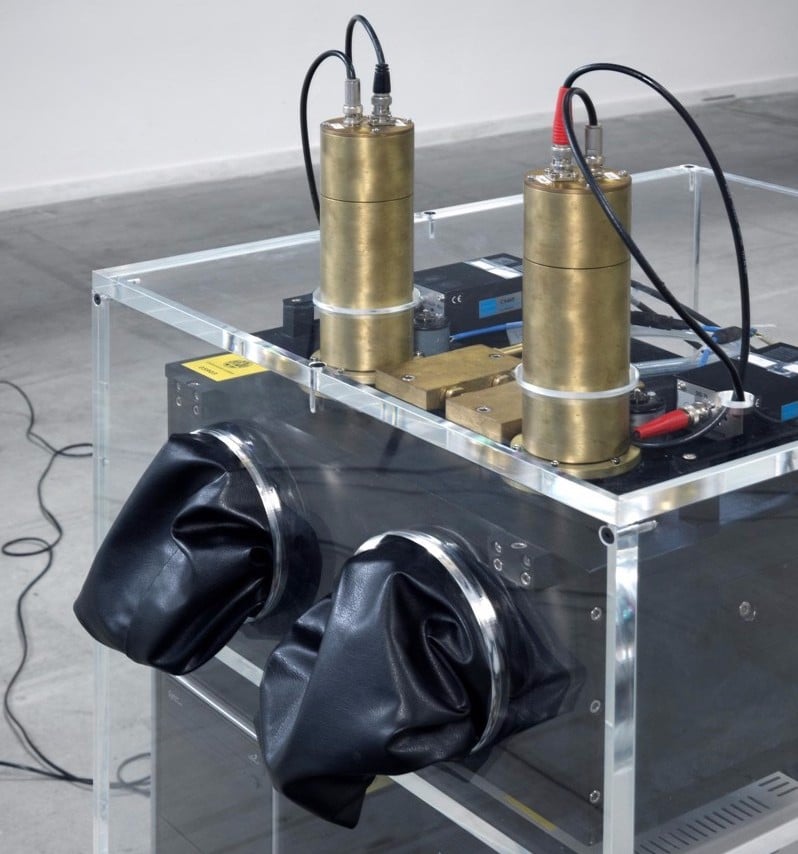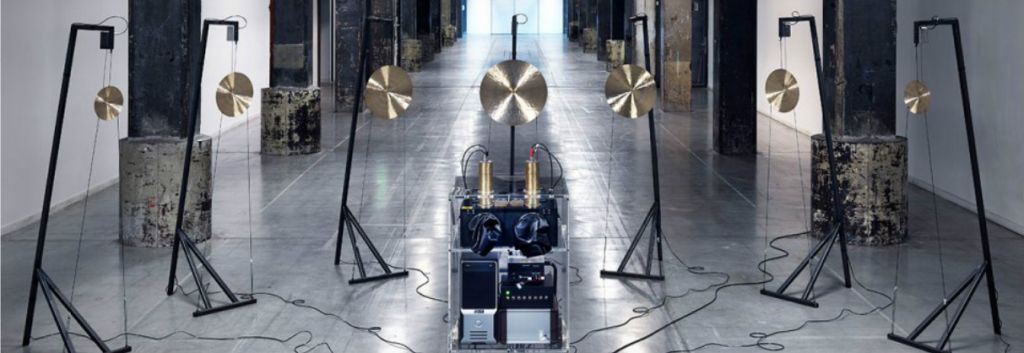Newsletter Signup - Under Article / In Page
"*" indicates required fields
Thought Collider and David Young have developed an installation that transforms the faint communication signals between your skin cells into sounds.
Artist duo Thought Collider is comprised of Mike Thompson, from the UK, and Susana Cámara Leret, from Spain. Based in Amsterdam and London, they experiment with the living nature of our bodies and microorganisms. Their latest exhibition, at the STRP Biennale in Eindhoven, is “Rhythm of Life“, a kinetic sound installation that transforms cell-to-cell communication cues within the body into rhythm.
The basis of the installation is a photon multiplier tube, a device that can detect individual photons and multiplies the current produced to make light measurable at the smallest scale. In this setting, the instrument measures biophotons, extremely weak light emissions that cells use to communicate with each other, as for example in the case of bioluminescence. The one used by Thought Collider is designed to measure biophoton emissions from the skin, which are invisible to the naked eye, and turn them into acoustic messages. This is what they sound like:
“On a technical level, the rhythms are generated according to [algorithms] that subdivide each beat into different rhythmic quantities: a higher intensity emission recorded from the left hand, for instance, would equate to a faster rhythm on the corresponding cymbal,” explained in an interview Dave Young, who took part in the development of the sound installation. “Played out over the whole setup, you can hear for instance how rhythms played out on the left hand are echoed on the right hand moments later.”
After analyzing the data from the first “Rhythm of Life” exhibition in 2015, the artists found that the device was able to convey messages regarding the health and well-being of the visitors. For example, people suffering from cancer tend to have higher biophoton emission, which, according to Thought Collider, could be explained by increased levels of oxygen radicals. On the other hand, people that meditate have been linked with lower biophoton emissions, and research collaborators at the University of Leiden and trying to find out why.

Both Thought Collider and Dave Young are members of the Data and Ethics Working Group, a collaborative research initiative that employs art to explore how the public perceives and responds to data access and sharing, as well as the ethical implications. In the first exhibition of “The Rhythm of Life“, the artists didn’t miss the opportunity to gain a deeper insight into what value we give our biological data. They created consent forms for the visitors that took part in the performance that resembled those used when participants in a research study need to fill in.
What they found was that most people seemed more ready to share their biological data than answer personal questions such as income or the use of medication. However, as we enter the era of the quantified self, data regarding our biological status might be more valuable and profitable than anything else. Asking these questions before we get flooded with technology to measure and share our most personal data seems to me a necessary step to finding out how these awesome new technologies should be regulated.






